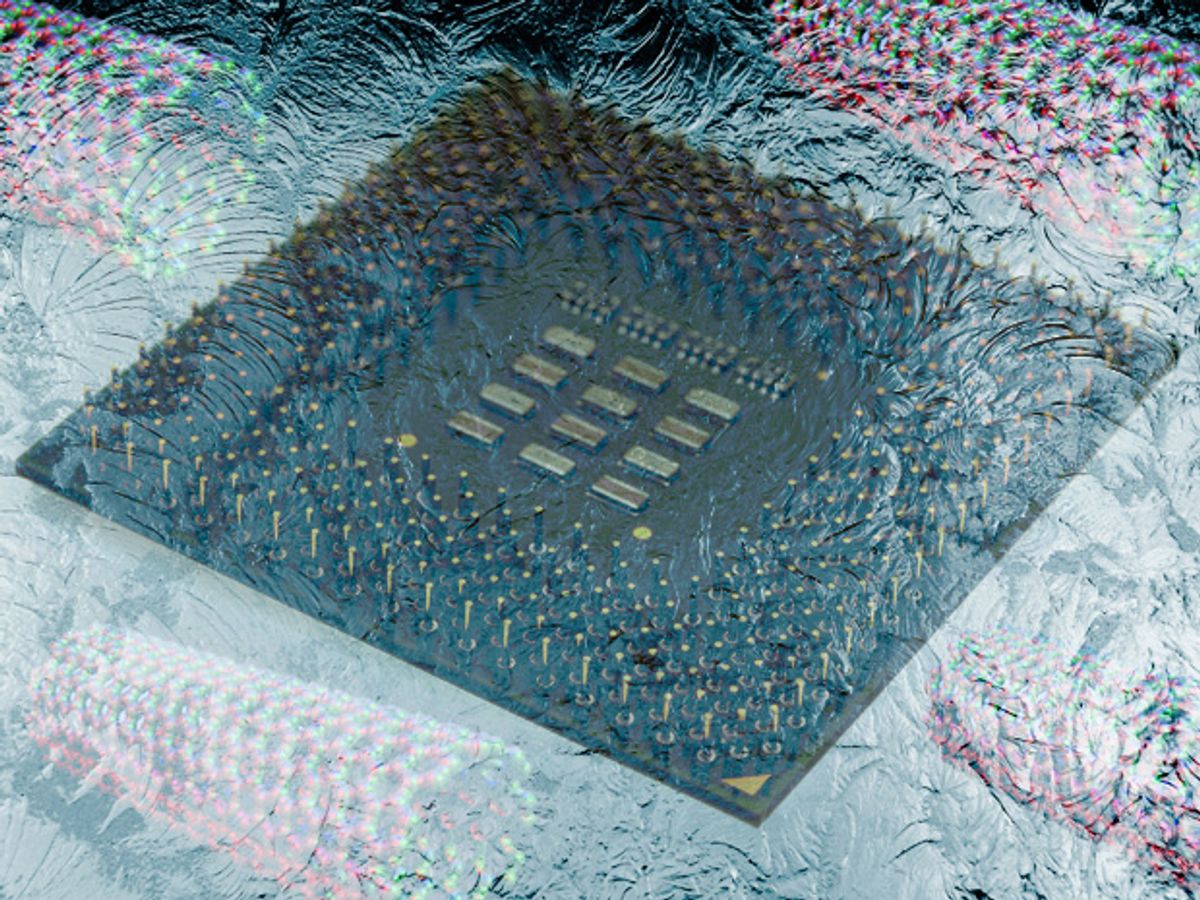Computer chips used in next-generation smartphones and supercomputers can't get much faster without overheating. That's why engineers hope carbon nanotubes offer a possible cooling solution that could enable processing speeds to continue accelerating.
The overheating problem has become steadily worse as engineers cram more power-hungry transistors into the same microchip space, because much of the electricity that powers the transistors is wasted as heat. Carbon nanotubes have high thermal conductivity that could carry the excess heat away from the microchips, but only if engineers can figure out how to improve the heat transfer at the point of contact between the nanotubes and microchips.
"The thermal conductivity of carbon nanotubes exceeds that of diamond or any other natural material but because carbon nanotubes are so chemically stable, their chemical interactions with most other materials are relatively weak, which makes for high thermal interface resistance," said Frank Ogletree, a physicist with the Lawrence Berkeley National Laboratory’s Materials Sciences Division, in a news release.
Ogletree and his colleagues worked with two former Intel researchers to figure out how to make a six-fold improvement in the heat flow between metal and carbon nanotubes. Their work is detailed in the 22 January issue of the journal Nature Communications.
The new study's success rests upon using organic molecules as a bridge between the carbon nanotubes and metal—a method that greatly reduces the interface resistance that would otherwise prevent heat from flowing more efficiently between the materials. The organic molecules, including aminopropyl-trialkoxy-silane (APS) and cysteamine, create strong covalent bonds between the carbon nanotubes and the metal used in microchips. (The same bonding technique pioneered by the researchers can also work with graphene—a promising material for complementing silicon transistors.)
"With carbon nanotubes, thermal interface resistance adds something like 40 [micrometers] of distance on each side of the actual carbon nanotube layer," said Sumanjeet Kaur, lead author of the Nature Communications paper and an industrial postdoctoral scientist at Porifera. "With our technique, we’re able to decrease the interface resistance so that the extra distance is around seven microns at each interface."
This success will help pave the way for carbon nanotubes' use in this application. But there is still a ways to go before we see them in commercially-available gadgets. One problem is that most nanotubes, grown in vertically-aligned arrays on silicon wafers, don't make contact with the metal surfaces. But the Berkeley team hopes to improve the density of the contacts between the nanotubes and metal over time.
Jeremy Hsu has been working as a science and technology journalist in New York City since 2008. He has written on subjects as diverse as supercomputing and wearable electronics for IEEE Spectrum. When he’s not trying to wrap his head around the latest quantum computing news for Spectrum, he also contributes to a variety of publications such as Scientific American, Discover, Popular Science, and others. He is a graduate of New York University’s Science, Health & Environmental Reporting Program.



